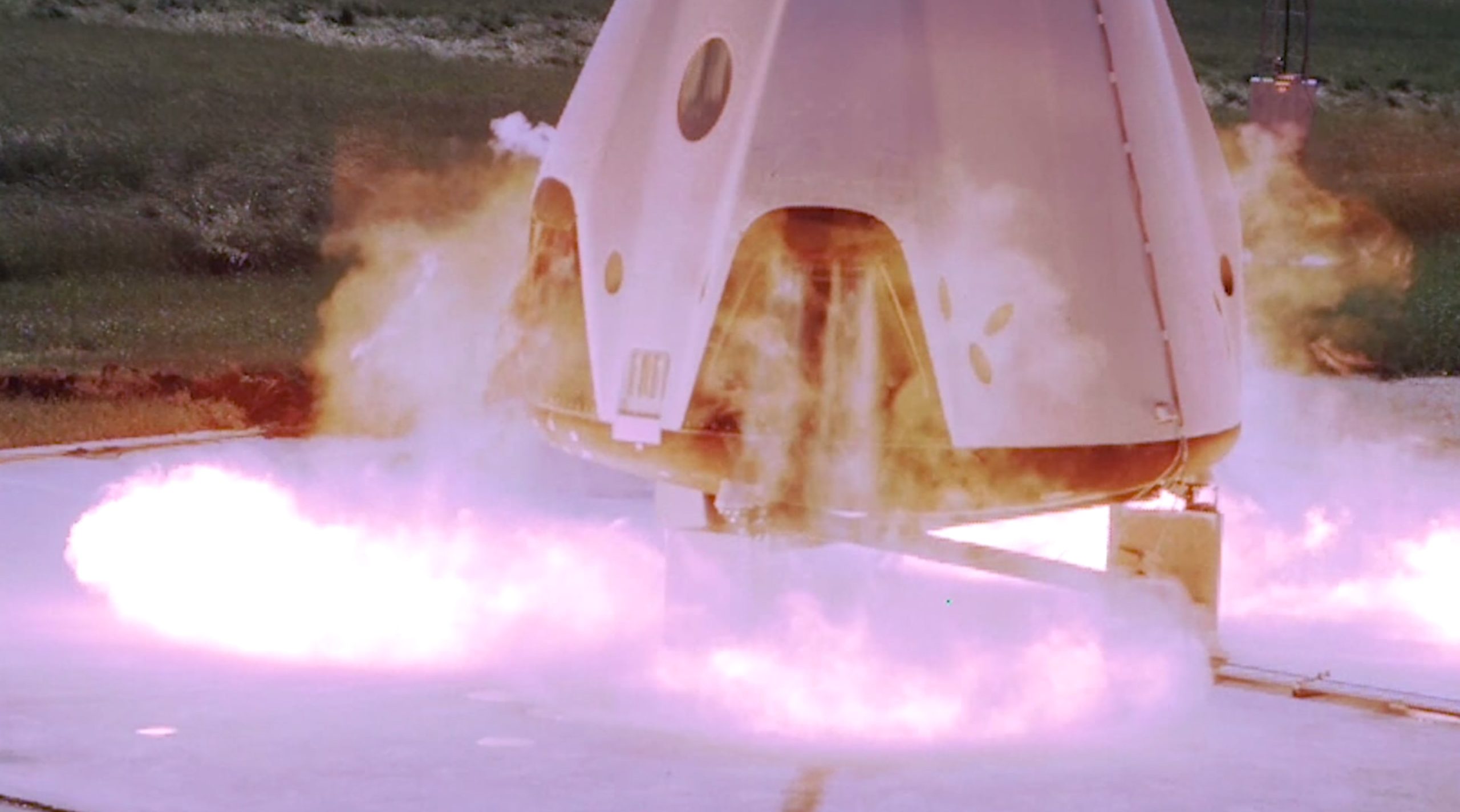
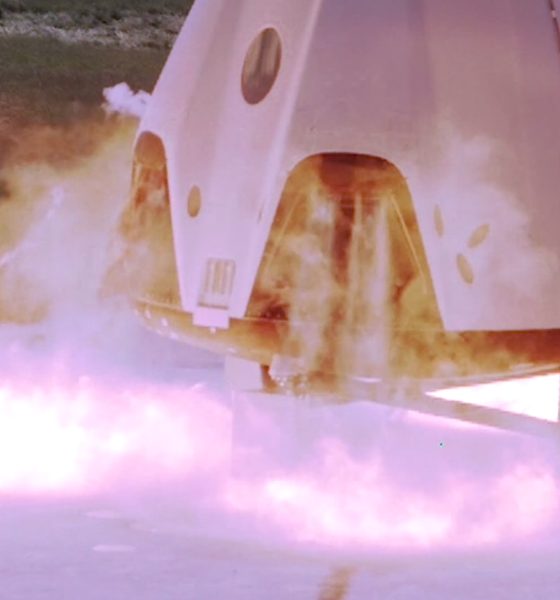
News
SpaceX says Crew Dragon capsule exploded due to exotic titanium fire
SpaceX has announced via an official update and conference call the preliminary results of a failure investigation convened immediately after Crew Dragon capsule C201 exploded in the midst of an April 20th static fire test.
Hosted by SpaceX Vice President of Mission Assurance Hans Koenigsmann and NASA Commercial Crew Program manager Kathy Lueders, the call provided some minor additional insight beyond a fairly extensive press release issued just prior. According to the preliminary results from SpaceX’s failure investigation, Crew Dragon’s explosion was unrelated to the spacecraft’s propellant tanks, Draco maneuvering thrusters, or SuperDraco abort engines. Rather, the cause lies in a more exotic and unanticipated chemical/material interaction between a plumbing valve, liquid oxidizer, and a helium-based pressurization system.
When metal burns
According to Hans Koenigsmann, SpaceX is approximately 80% of the way through what is known as the fault tree, essentially meaning that the failure investigation is 80% complete. That additional 20% could certainly throw some curveballs but the SpaceX executive was fairly confident that the results presented on July 15th would be representative of the final conclusion.
The ultimate (likely) cause of Crew Dragon’s extremely energetic and destructive explosion centers around the spacecraft’s extensive SuperDraco/Draco plumbing and its associated pressurization system, which uses helium to keep the pressure-fed engines, propellant tanks, and feed lines around 2400 psi (16.5 megapascals). Necessarily, this method of pressurization means that there is direct contact between the pressurant (helium) and the oxidizer/fuel, thus requiring some sort of valve preventing the pressurized fluid from flowing into the pressurization system.
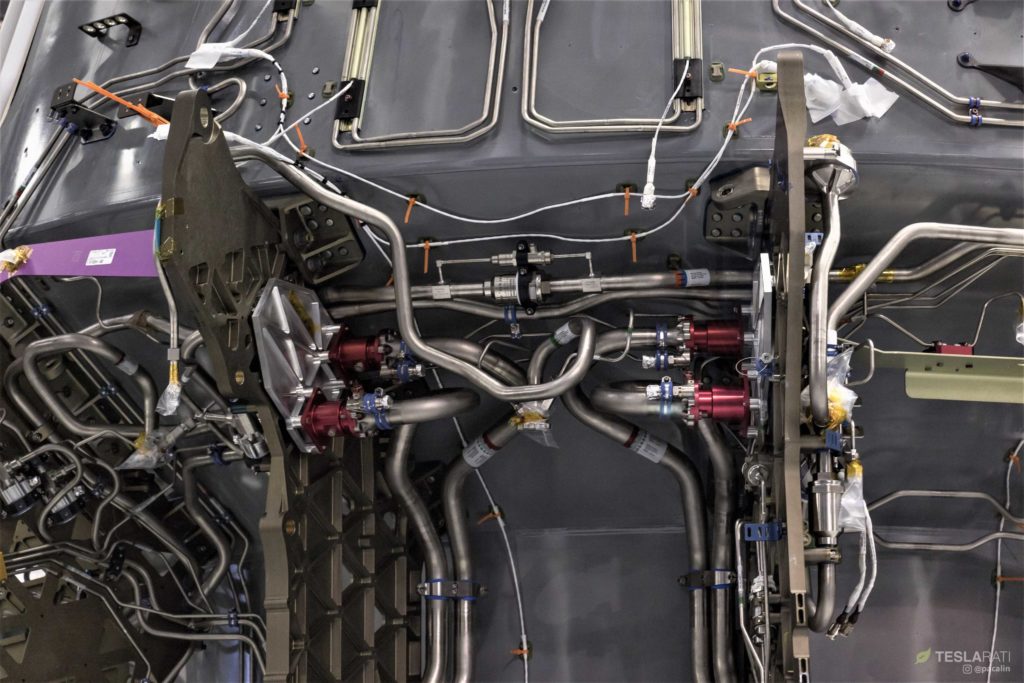
During flight-proven Crew Dragon capsule C201’s April 20th static fire testing, that is reportedly exactly what happened. Over the course of ground testing, a “check valve” separating the pressurization system and oxidizer leaked what SpaceX described as a “slug” of nitrogen tetroxide oxidizer (NTO) into the helium pressurization lines. Around T-100 milliseconds to a planned ignition of the vehicle’s 8 SuperDraco abort engines, the pressurization system rapidly “initialized” (i.e. quickly pressurized the oxidizer and fuel to operational pressures, ~2400 psi).
To do this, helium is rapidly pushed through a check valve – designed with low-molecular-mass helium in mind – to physically pressurize the propellant systems. Unintentionally, the NTO that leaked ‘upstream’ through that valve effectively was taken along for the ride with the high-pressure burst of helium. In essence, picture that you crash your car, only to discover that your nice, fluffy airbag has accidentally been replaced with a bag of sand, and you might be able to visualize the unintended forces Dragon’s check valve (the metaphorical airbag) was subjected to when a “slug” of dense oxidizer was rammed into it at high speed.
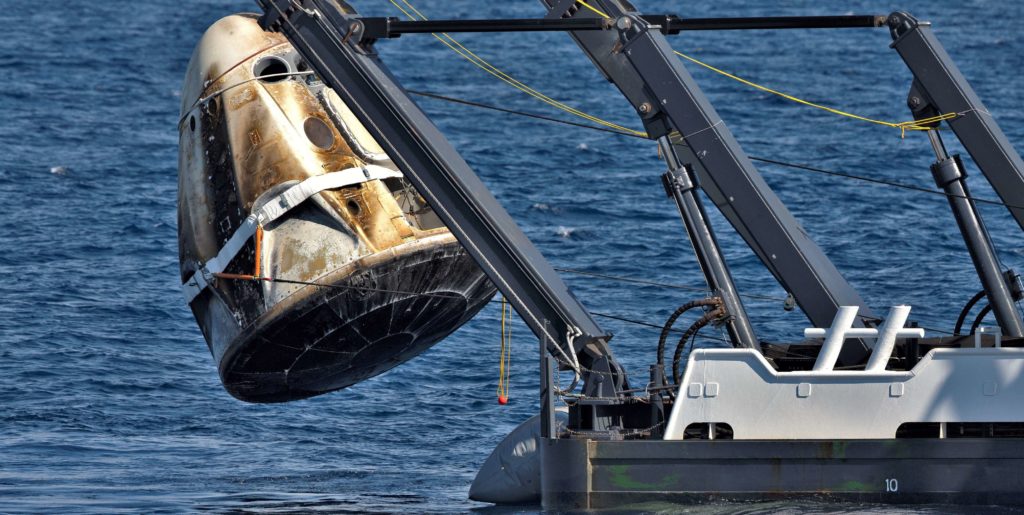
In itself, this sort of failure mode is not hugely surprising and SpaceX may have even been aware of some sort of check valve leak(s) and accepted what it believed to be a minor risk in order to continue the test and perhaps examine Dragon’s performance under suboptimal conditions. What SpaceX says it did not realize was just how energetic the reaction between the NTO and the check valve could be. SpaceX’s understanding is that the high-speed slug of dense NTO was traveling so fast and at such a high pressure that, by impacting the titanium check valve, it quite literally broke the valve and may have chemically ignited the metal, thus introducing a slug of burning NTO into the liberated NTO system itself – effectively a match tossed into a powder keg.
It’s unclear if the ignition came from a chemical reaction between titanium (a technically flammable metal similar to magnesium) and NTO, or if the source came from the titanium valve being smashed apart, perhaps quite literally creating a spark as metal debris violently interacted. Either way, the solution – as SpaceX perceives it – is the same: instead of a mechanical check valve (simple but still not 100% passive), the barrier between pressurant and oxidizer (as well as fuel, most likely) will be replaced with something known as a burst disk. According to Koenigsmann, only a handful (~4) of those valves exist and thus need to be replaced by burst disks, a relatively fast and easy fix.
Burst disks are single-use and inherently unreusable, but they are also completely passive and simply do not leak until subjected to a specific amount of pressure. Because they are single-use, they can’t be directly tested prior to flight, limiting some of the in-principle reliability for the sake of an extremely leak-proof barrier.
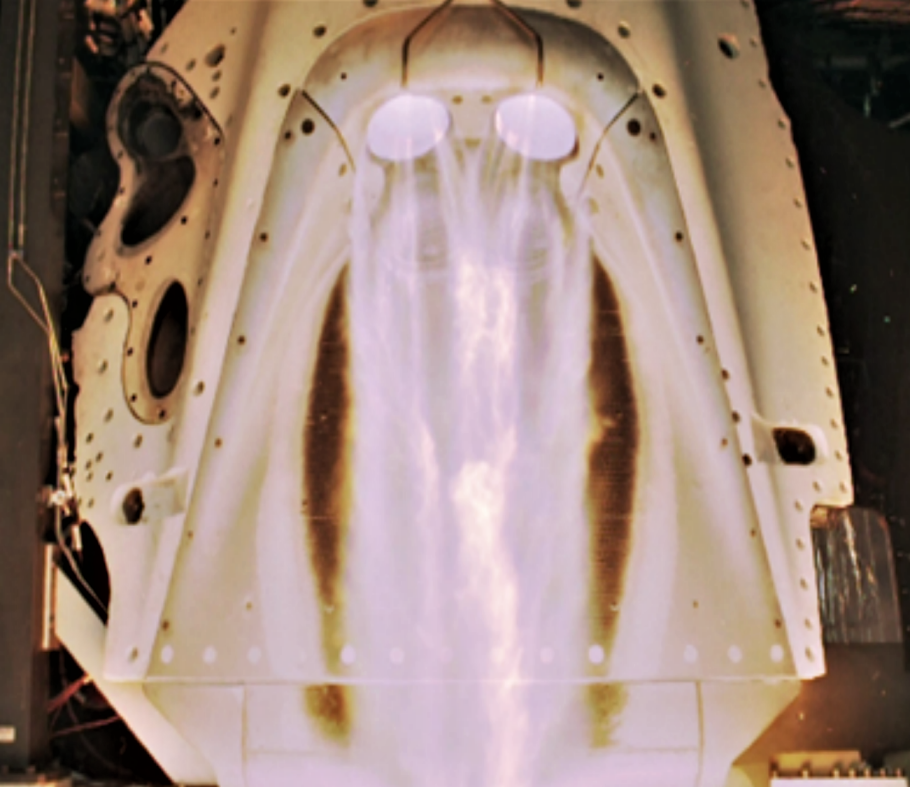
Ultimately, both Koenigsmann and Lueders went out of their way to avoid answering any questions about SpaceX’s Crew Dragon upcoming test and launch schedule and what sort of delays the explosion will ultimately incur. Both individuals were nevertheless upbeat and by the sound of it, delays to Crew Dragon will be far less severe relative to delays caused by a pressure vessel or engine failure. For the time being, NASA has published a tentative target of mid-November 2019 for Crew Dragon’s first crewed launch to the International Space Station, while Lueders and Koenigsmann expressed hope in a 2019 launch but refused to give a specific estimate of the odds of that occurring.
Check out Teslarati’s Marketplace! We offer Tesla accessories, including for the Tesla Cybertruck and Tesla Model 3.

News
Man credits Grok AI with saving his life after ER missed near-ruptured appendix
The AI flagged some of the man’s symptoms and urged him to return to the ER immediately and demand a CT scan.

A 49-year-old man has stated that xAI’s Grok ended up saving his life when the large language model identified a near-ruptured appendix that his first ER visit dismissed as acid reflux.
After being sent home from the ER, the man asked Grok to analyze his symptoms. The AI flagged some of the man’s symptoms and urged him to return immediately and demand a CT scan. The scan confirmed that something far worse than acid reflux was indeed going on.
Grok spotted what a doctor missed
In a post on Reddit, u/Tykjen noted that for 24 hours straight, he had a constant “razor-blade-level” abdominal pain that forced him into a fetal position. He had no fever or visible signs. He went to the ER, where a doctor pressed his soft belly, prescribed acid blockers, and sent him home.
The acid blockers didn’t work, and the man’s pain remained intense. He then decided to open a year-long chat he had with Grok and listed every detail that he was experiencing. The AI responded quickly. “Grok immediately flagged perforated ulcer or atypical appendicitis, told me the exact red-flag pattern I was describing, and basically said “go back right now and ask for a CT,” the man wrote in his post.
He copied Grok’s reasoning, returned to the ER, and insisted on the scan. The CT scan ultimately showed an inflamed appendix on the verge of rupture. Six hours later, the appendix was out. The man said the pain has completely vanished, and he woke up laughing under anesthesia. He was discharged the next day.
How a late-night conversation with Grok got me to demand the CT scan that saved my life from a ruptured appendix (December 2025)
byu/Tykjen ingrok
AI doctors could very well be welcomed
In the replies to his Reddit post, u/Tykjen further explained that he specifically avoided telling doctors that Grok, an AI, suggested he get a CT scan. “I did not tell them on the second visit that Grok recommended the CT scan. I had to lie. I told them my sister who’s a nurse told me to ask for the scan,” the man wrote.
One commenter noted that the use of AI in medicine will likely be welcomed, stating that “If AI could take doctors’ jobs one day, I will be happy. Doctors just don’t care anymore. It’s all a paycheck.” The Redditor replied with, “Sadly yes. That is what it felt like after the first visit. And the following night could have been my last.”
Elon Musk has been very optimistic about the potential of robots like Tesla Optimus in the medical field. Provided that they are able to achieve human-level articulation in their hands, and Tesla is able to bring down their cost through mass manufacturing, the era of AI-powered medical care could very well be closer than expected.
News
Tesla expands Model 3 lineup in Europe with most affordable variant yet
The Model 3 Standard still delivers more than 300 miles of range, potentially making it an attractive option for budget-conscious buyers.

Tesla has introduced a lower-priced Model 3 variant in Europe, expanding the lineup just two months after the vehicle’s U.S. debut. The Model 3 Standard still delivers more than 300 miles (480 km) of range, potentially making it an attractive option for budget-conscious buyers.
Tesla’s pricing strategy
The Model 3 Standard arrives as Tesla contends with declining registrations in several countries across Europe, where sales have not fully offset shifting consumer preferences. Many buyers have turned to options such as Volkswagen’s ID.3 and BYD’s Atto 3, both of which have benefited from aggressive pricing.
By removing select premium finishes and features, Tesla positioned the new Model 3 Standard as an “ultra-low cost of ownership” option of its all-electric sedan. Pricing comes in at €37,970 in Germany, NOK 330,056 in Norway, and SEK 449,990 in Sweden, depending on market. This places the Model 3 Standard well below the “premium” Model 3 trim, which starts at €45,970 in Germany.
Deliveries for the Standard model are expected to begin in the first quarter of 2026, giving Tesla an entry-level foothold in a segment that’s increasingly defined by sub-€40,000 offerings.
Tesla’s affordable vehicle push
The low-cost Model 3 follows October’s launch of a similarly positioned Model Y variant, signaling a broader shift in Tesla’s product strategy. While CEO Elon Musk has moved the company toward AI-driven initiatives such as robotaxis and humanoid robots, lower-priced vehicles remain necessary to support the company’s revenue in the near term.
Reports have indicated that Tesla previously abandoned plans for an all-new $25,000 EV, with the company opting to create cheaper versions of existing platforms instead. Analysts have flagged possible cannibalization of higher-margin models, but the move aims to counter an influx of aggressively priced entrants from China and Europe, many of which sell below $30,000. With the new Model 3 Standard, Tesla is reinforcing its volume strategy in Europe’s increasingly competitive EV landscape.
News
Tesla FSD (Supervised) stuns Germany’s biggest car magazine
FSD Supervised recognized construction zones, braked early for pedestrians, and yielded politely on narrow streets.

Tesla’s upcoming FSD Supervised system, set for a European debut pending regulatory approval, is showing notably refined behavior in real-world testing, including construction zones, pedestrian detection, and lane changes, as per a recent demonstration ride in Berlin.
While the system still required driver oversight, its smooth braking, steering, and decision-making illustrated how far Tesla’s driver-assistance technology has advanced ahead of a potential 2026 rollout.
FSD’s maturity in dense city driving
During the Berlin test ride with Auto Bild, Germany’s largest automotive publication, a Tesla Model 3 running FSD handled complex traffic with minimal intervention, autonomously managing braking, acceleration, steering, and overtaking up to 140 km/h. It recognized construction zones, braked early for pedestrians, and yielded politely on narrow streets.
Only one manual override was required when the system misread a converted one-way route, an example, Tesla stated, of the continuous learning baked into its vision-based architecture.
Robin Hornig of Auto Bild summed up his experience with FSD Supervised with a glowing review of the system. As per the reporter, FSD Supervised already exceeds humans with its all-around vision. “Tesla FSD Supervised sees more than I do. It doesn’t get distracted and never gets tired. I like to think I’m a good driver, but I can’t match this system’s all-around vision. It’s at its best when both work together: my experience and the Tesla’s constant attention,” the journalist wrote.
Tesla FSD in Europe
FSD Supervised is still a driver-assistance system rather than autonomous driving. Still, Auto Bild noted that Tesla’s 360-degree camera suite, constant monitoring, and high computing power mark a sizable leap from earlier iterations. Already active in the U.S., China, and several other regions, the system is currently navigating Europe’s approval pipeline. Tesla has applied for an exemption in the Netherlands, aiming to launch the feature through a free software update as early as February 2026.
What Tesla demonstrated in Berlin mirrors capabilities already common in China and the U.S., where rival automakers have rolled out hands-free or city-navigation systems. Europe, however, remains behind due to a stricter certification environment, though Tesla is currently hard at work pushing for FSD Supervised’s approval in several countries in the region.








